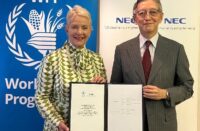 Monetary targeting, in principle, remained the framework for monetary management during the first half of 2012. In reality, however, actual implementation of monetary policy adopted an eclectic approach, as attention was focused on both quantity and price variables to achieve the objective of monetary and price stability.
Monetary targeting, in principle, remained the framework for monetary management during the first half of 2012. In reality, however, actual implementation of monetary policy adopted an eclectic approach, as attention was focused on both quantity and price variables to achieve the objective of monetary and price stability.
In this regard, the Bank sustained the use of Open Market Operations (OMO), repurchase transactions, standing facilities and discount windows as the major tools of its monetary operations.
These were complemented with prudential requirements such as cash reserve ratio requirement (CRR) and liquidity ratio (LR) as well as primary market transactions in government securities andinterventions in the foreign exchange market.
Monetary policy implementation remained generally tight with the monetary policy rate (MPR) signalling the stance of policy and serving as the anchor for short-term money market and other rates.
The Bank intensified its surveillance activities through regular appraisal and review of banks‟ returns, spot checks, special investigations and risk-based supervision, among others.
The Bank also pursued the implementation of its initiatives on development financing, namely; the N235 billion Intervention Fund for Refinancing and Restructuring of Bank‟s Loans to the Manufacturing/SME Sector, the N200 billion SME Credit Guarantee Scheme Fund (SMECGS) and the N300 billion Power and Airline Intervention Fund (PAIF).
Furthermore, the Bank continued the implementation of Agricultural Credit Guarantee Scheme (ACGS), the Commercial Agricultural Credit Scheme (CACS) and, in addition, approved the establishment of additional three Entrepreneurship Development Centres. The implementation of the Nigeria Incentive-Based Risk Sharing System for Agricultural Lending (NIRSAL) was boosted with the engagement of the 26 state Governments.
Click here to download full Report
Source: CBN






